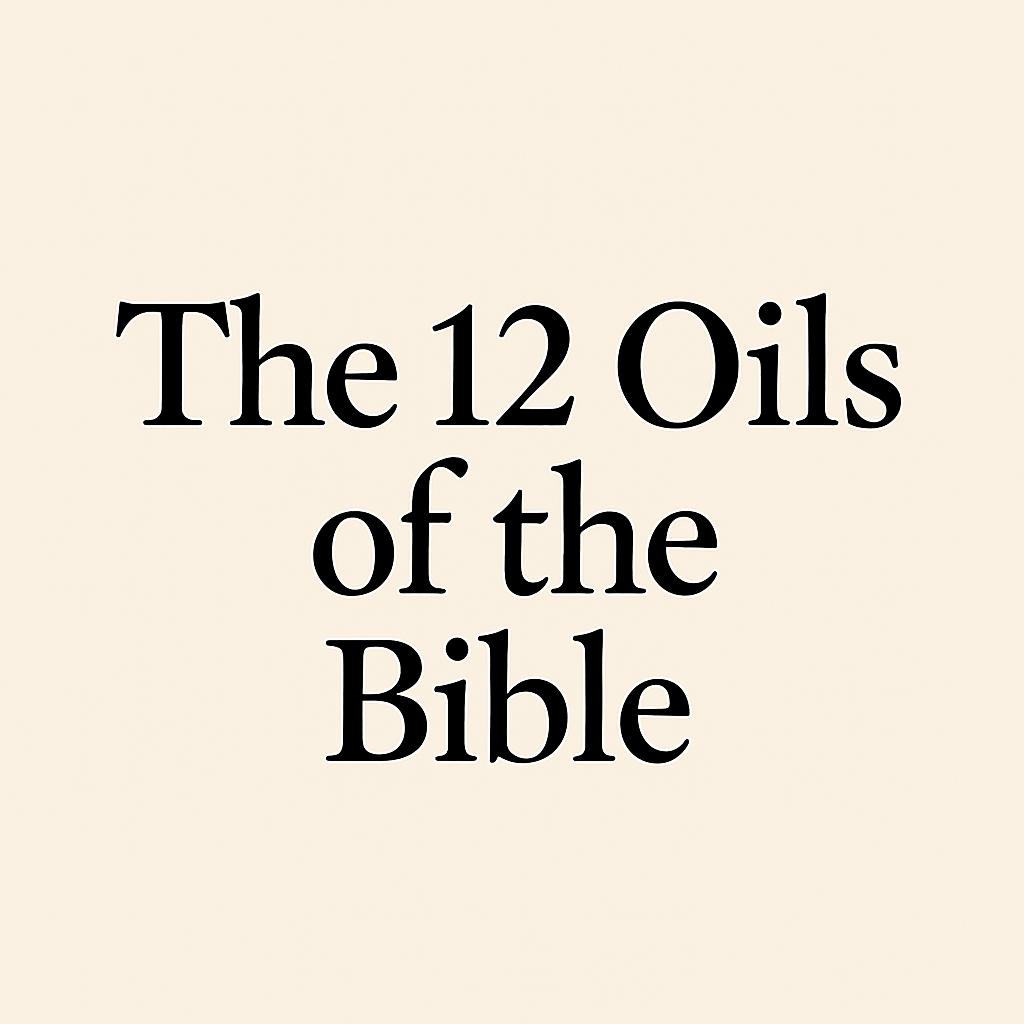The 12 oils of the Bible
The 12 oils of the Bible refer to aromatic oils and resins mentioned in Scripture, often used for anointing, healing, purification, or worship. While the Bible doesn’t list them in a single group of 12, modern essential oil traditions have compiled a symbolic list based on biblical references.
Here are the 12 commonly recognized biblical oils:
Frankincense – One of the gifts given to Jesus by the Magi; used in temple incense and worship (Exodus 30:34, Matthew 2:11). Known for its sweet, woody aroma, frankincense was a symbol of divinity and prayer, commonly used by priests to represent the lifting of prayers to heaven. Today, it is valued for its calming, immune-supporting, and anti-inflammatory properties.
Myrrh – Used in embalming, purification, and anointing (Esther 2:12, John 19:39). A bitter resin with deep spiritual meaning, myrrh was associated with suffering and healing. It was also used in burial rituals and as a perfume. In modern times, it is known for skin care, oral health, and emotional grounding.
Cinnamon – Like Myrrh, cinnamon oil was a chief ingredient in holy anointing oil and used to cleanse air, kill mold and act as a natural medicine. In Proverbs 7:17, Solomon uses this aromatic oil in the bedroom and as a natural perfume or cologne.
Cedarwood – Symbolic of strength and purification; used in cleansing rituals (Leviticus 14:4–6). Cedarwood oil was extracted from the famous cedars of Lebanon and used in temple building. Biblically, it represented protection and purification. Today, it’s used for calming the nervous system, sleep aid, and as an insect repellent.
Cypress – Associated with healing and purification; also used in building temples (Isaiah 44:14). Cypress trees are evergreen and symbolize life and eternity. Biblically, it represented resilience and transformation. It is now used for improving circulation, respiratory health, and emotional grounding.
Hyssop – Used for purification and ritual cleansing (Psalm 51:7, Exodus 12:22). Hyssop was part of sacred purification rites, including the first Passover. It symbolized spiritual cleansing and renewal. Today, it supports respiratory health and is used in aromatherapy for emotional clarity.
Cassia – An ingredient in holy anointing oil (Exodus 30:24). Similar to cinnamon in scent and properties, cassia symbolized consecration and holiness. It was used in temple rituals and anointing of priests. Modern use includes digestive support and its warming, antimicrobial properties.
Spikenard (Nard) – Used to anoint Jesus’ feet (John 12:3). Spikenard was an expensive, aromatic oil signifying devotion and sacrifice. It was poured out in an intimate act of worship and love. It remains valued for deep relaxation, emotional balance, and spiritual meditation.
Galbanum – Part of the holy incense blend (Exodus 30:34). A resin with a strong earthy scent, galbanum was included in sacred incense offerings. It represented holiness and the mysterious presence of God. Today, it’s used in perfumes, spiritual rituals, and skin healing.
Rose of Sharon (Cistus) – Symbolic reference in Song of Solomon; associated with beauty and healing (Song of Solomon 2:1). Often linked with cistus or labdanum, it signified love, beauty, and divine connection. Its oil has regenerative effects for skin and is emotionally uplifting.
Aloes (Sandalwood) – Used in burial and anointing, mentioned in connection with Nicodemus preparing Jesus’ body (John 19:39). Aloes represented honor and sacredness. Likely sandalwood or agarwood, it was a prized fragrance. Today, it supports skin health, emotional calm, and spiritual reflection.




